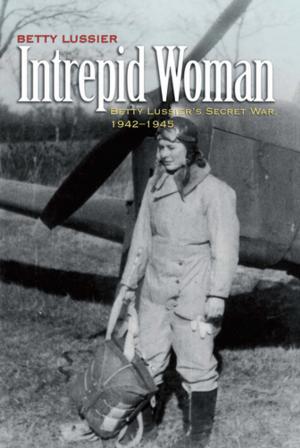"A" Force
The Origins of British Deception in the Second World War
Nonfiction, History, Military, World War II| Author: | Whitney Bendeck | ISBN: | 9781612512341 |
| Publisher: | Naval Institute Press | Publication: | October 15, 2013 |
| Imprint: | Naval Institute Press | Language: | English |
| Author: | Whitney Bendeck |
| ISBN: | 9781612512341 |
| Publisher: | Naval Institute Press |
| Publication: | October 15, 2013 |
| Imprint: | Naval Institute Press |
| Language: | English |
June 1940. The Italians declared war on the British. Completely unprepared for war, the British had only 35,000 troops to defend Egypt. Opposing them, the Italian army in Libya numbered at least 215,000; in East Africa, the Italians could muster another 200,000 men against a meager 19,000 British and commonwealth troops positioned in the Sudan and East Africa. Out-numbered and unlikely to receive sizable reinforcements of men or desperately needed supplies, it is surprising that the British survived. But they did. How? They got creative. Under the leadership of General Archibald P. Wavell, the commander-in-chief of the Middle East, the British set out to greatly exaggerate the size of their forces, supply levels, and state of battle readiness. When their deceitful charades proved successful, Wavell turned trickery into a profession and created an entirely new agency dedicated to carrying out deception.
A” Force: The Origins of British Military Deception during the Second World War looks at how and why the British first employed deception in WWII. More specifically, it traces the development of the "A" Force organization - the first British organization to practice both tactical and strategic deception in the field. Formed in Cairo in 1941, "A" Force was headed by an unconventional colonel named Dudley Wrangel Clarke. Because there was no precedent for Clarke's "A" Force, it truly functioned on a trial-and-error basis. The learning curve was steep, but Clarke was up for the challenge. By the Battle of El Alamein, British deception had reach maturity. Moreover, it was there that the deceptionists established the deception blueprint later used by the London planners used to plan and execute Operation Bodyguard, the campaign to conceal Allied intentions regarding the well-known D-day landing at Normandy. In contrast to earlier deception histories that have tended to focus on Britain’s later deception coups (Bodyguard), thus giving the impression that London masterminded Britain’s deception efforts, this work clearly shows that British deception was forged much earlier in the deserts of Africa under the leadership of Dudley Clarke, not London. Moreover, it was born not out of opportunity, but out of sheer desperation. A” Force explores an area of deception history that has often been neglected. While older studies and documentaries focused on the D-day deception campaign and Britain’s infamous double-agents, this work explores the origins of Britain’s deception activities to reveal how the British became such masterful deceivers.
A” Force: The Origins of British Military Deception during the Second World War looks at how and why the British first employed deception in WWII. More specifically, it traces the development of the "A" Force organization - the first British organization to practice both tactical and strategic deception in the field. Formed in Cairo in 1941, "A" Force was headed by an unconventional colonel named Dudley Wrangel Clarke. Because there was no precedent for Clarke's "A" Force, it truly functioned on a trial-and-error basis. The learning curve was steep, but Clarke was up for the challenge. By the Battle of El Alamein, British deception had reach maturity. Moreover, it was there that the deceptionists established the deception blueprint later used by the London planners used to plan and execute Operation Bodyguard, the campaign to conceal Allied intentions regarding the well-known D-day landing at Normandy. In contrast to earlier deception histories that have tended to focus on Britain’s later deception coups (Bodyguard), thus giving the impression that London masterminded Britain’s deception efforts, this work clearly shows that British deception was forged much earlier in the deserts of Africa under the leadership of Dudley Clarke, not London. Moreover, it was born not out of opportunity, but out of sheer desperation. A” Force explores an area of deception history that has often been neglected. While older studies and documentaries focused on the D-day deception campaign and Britain’s infamous double-agents, this work explores the origins of Britain’s deception activities to reveal how the British became such masterful deceivers.
June 1940. The Italians declared war on the British. Completely unprepared for war, the British had only 35,000 troops to defend Egypt. Opposing them, the Italian army in Libya numbered at least 215,000; in East Africa, the Italians could muster another 200,000 men against a meager 19,000 British and commonwealth troops positioned in the Sudan and East Africa. Out-numbered and unlikely to receive sizable reinforcements of men or desperately needed supplies, it is surprising that the British survived. But they did. How? They got creative. Under the leadership of General Archibald P. Wavell, the commander-in-chief of the Middle East, the British set out to greatly exaggerate the size of their forces, supply levels, and state of battle readiness. When their deceitful charades proved successful, Wavell turned trickery into a profession and created an entirely new agency dedicated to carrying out deception.
A” Force: The Origins of British Military Deception during the Second World War looks at how and why the British first employed deception in WWII. More specifically, it traces the development of the "A" Force organization - the first British organization to practice both tactical and strategic deception in the field. Formed in Cairo in 1941, "A" Force was headed by an unconventional colonel named Dudley Wrangel Clarke. Because there was no precedent for Clarke's "A" Force, it truly functioned on a trial-and-error basis. The learning curve was steep, but Clarke was up for the challenge. By the Battle of El Alamein, British deception had reach maturity. Moreover, it was there that the deceptionists established the deception blueprint later used by the London planners used to plan and execute Operation Bodyguard, the campaign to conceal Allied intentions regarding the well-known D-day landing at Normandy. In contrast to earlier deception histories that have tended to focus on Britain’s later deception coups (Bodyguard), thus giving the impression that London masterminded Britain’s deception efforts, this work clearly shows that British deception was forged much earlier in the deserts of Africa under the leadership of Dudley Clarke, not London. Moreover, it was born not out of opportunity, but out of sheer desperation. A” Force explores an area of deception history that has often been neglected. While older studies and documentaries focused on the D-day deception campaign and Britain’s infamous double-agents, this work explores the origins of Britain’s deception activities to reveal how the British became such masterful deceivers.
A” Force: The Origins of British Military Deception during the Second World War looks at how and why the British first employed deception in WWII. More specifically, it traces the development of the "A" Force organization - the first British organization to practice both tactical and strategic deception in the field. Formed in Cairo in 1941, "A" Force was headed by an unconventional colonel named Dudley Wrangel Clarke. Because there was no precedent for Clarke's "A" Force, it truly functioned on a trial-and-error basis. The learning curve was steep, but Clarke was up for the challenge. By the Battle of El Alamein, British deception had reach maturity. Moreover, it was there that the deceptionists established the deception blueprint later used by the London planners used to plan and execute Operation Bodyguard, the campaign to conceal Allied intentions regarding the well-known D-day landing at Normandy. In contrast to earlier deception histories that have tended to focus on Britain’s later deception coups (Bodyguard), thus giving the impression that London masterminded Britain’s deception efforts, this work clearly shows that British deception was forged much earlier in the deserts of Africa under the leadership of Dudley Clarke, not London. Moreover, it was born not out of opportunity, but out of sheer desperation. A” Force explores an area of deception history that has often been neglected. While older studies and documentaries focused on the D-day deception campaign and Britain’s infamous double-agents, this work explores the origins of Britain’s deception activities to reveal how the British became such masterful deceivers.















